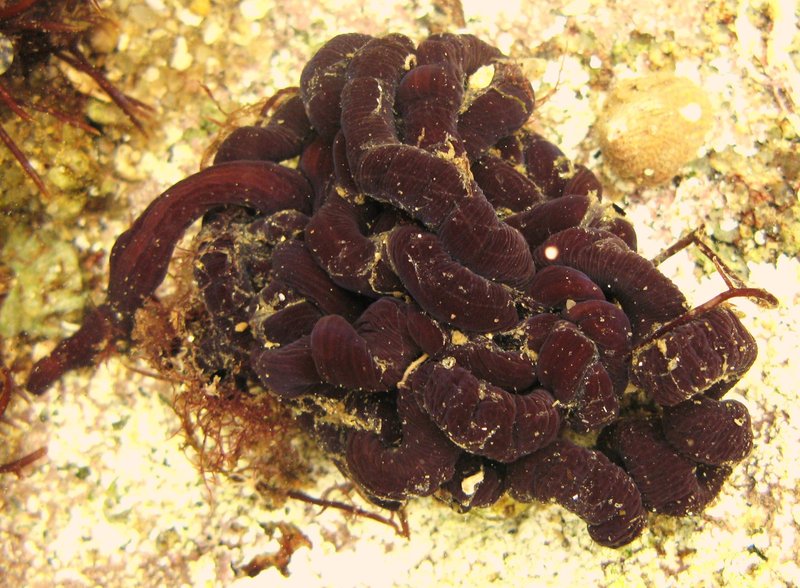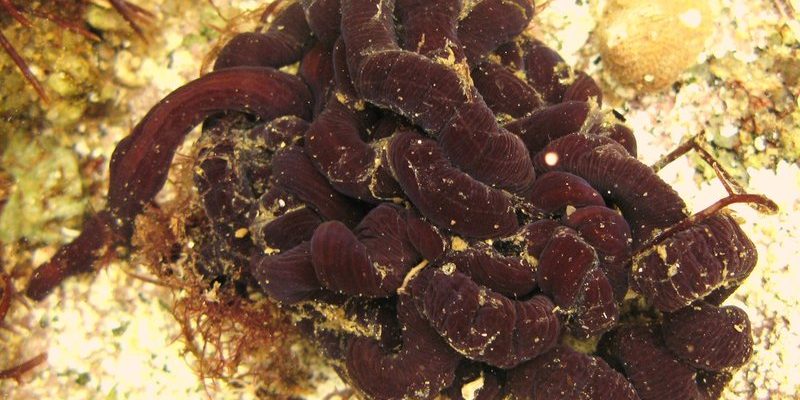
Imagine you’re in a museum, surrounded by ancient fossils and the echoes of life from eons ago. You might find bone fragments or the imprints of creatures that lived in a time before we even existed. Bootlace worm fossils tell a story of their own—one that stretches back into the depths of time, connecting us to the slimy strands that swim in our oceans today. Just like a family tree traces our lineage, studying these fossils helps scientists understand how bootlace worms and their ancient relatives have evolved over the ages.
The Unique Biology of Bootlace Worms
Bootlace worms are nothing if not fascinating. These creatures can grow up to an astonishing **55 meters** long, making them the longest animals on the planet! They have a soft, elongated body that, when seen floating in the water, looks a bit like a ribbon. This body is made of muscle and can contract and expand, allowing them to move gracefully through their underwater homes.
Here’s a fun fact: despite their impressive size, bootlace worms are typically quite harmless to humans. They thrive in the ocean, primarily found in the murky depths of the North Atlantic and the North Sea. These worms feed by secreting a slime that traps small prey, such as tiny crustaceans and fish larvae. You might be wondering how these creatures relate to their ancient relatives—let’s take a closer look.
The Fossil Record of Bootlace Worms
Fossils can tell us a lot about the past, and bootlace worms are no exception. Their fossils are typically found as imprints in sediment, sometimes preserved remarkably well in amber or other materials. These fossils help scientists understand not only the appearance but also the behavior of these ancient creatures.
The oldest known bootlace worm fossils date back to the **Cambrian period**, around 500 million years ago. This period was a time of great diversity in marine life, as many species were beginning to evolve. Finding fossils from this period is like finding a time capsule, giving us a glimpse into the dynamics of ancient ecosystems. The shapes and sizes of these fossils suggest that early bootlace worms were quite different from the ones we see today. It’s a reminder that evolution is a lengthy process that can lead to extraordinary changes over millions of years.
Ancient Relatives: The Evolutionary Journey
Bootlace worms belong to a group called **Nemertea**, which is sometimes referred to as ribbon worms. The evolutionary journey of these creatures is intertwined with many marine species. Their ancestors likely lived in the same environments as trilobites and other early marine animals. This connection gives us a sense of how life has transformed throughout history.
Some ancient relatives of bootlace worms had hard shells and could be more than just soft bodies gliding through the seas. Instead, some had a more muscular, active lifestyle—hunting and moving quickly through the water. This adaptability played a crucial role in their survival, allowing them to thrive alongside many other evolving species.
Modern Research and Discoveries
Scientists today are fascinated by bootlace worms, not just because of their size but also due to their unique biology. Continuous research is aimed at understanding how these worms can regenerate lost body segments, a trait that could inspire advancements in medicine and tissue engineering. By studying the genetics of bootlace worms, researchers hope to unlock secrets about regeneration and healing found in these ancient lineages.
Moreover, the study of bootlace worm fossils is helping us understand climate changes through the ages. By examining the conditions in which these fossils were formed, scientists can learn how ancient ecosystems responded to shifts in temperature and environment. This knowledge is crucial as we face our own climate challenges today.
Why Bootlace Worms Matter
You might wonder, “Why should I care about bootlace worms and their fossils?” Here’s the thing: studying these creatures helps us appreciate the complexity of life and how interconnected everything is. Every species, no matter how small or strange, plays a role in the ecosystem. Bootlace worms contribute to the balance of marine life, serving as both predators and prey.
Their ancient relatives also offer insights into how life has adapted over millennia. Understanding these connections can help us as we work to protect our environment. The more we learn about the past, the better we can safeguard the future for all species, including ours.
The Future of Bootlace Worm Research
As science continues to evolve, so too does our understanding of creatures like the bootlace worm. New technologies allow for more precise fossil dating and advanced imaging techniques, leading to a more detailed picture of these ancient beings. Collaborations between paleontologists and marine biologists are essential in piecing together the entire puzzle of life—the fossil record and the living creatures swimming in our oceans today.
Bootlace worms are more than just fascinating animals; they represent a connection to our planet’s history. As we look toward the future, the preservation of biodiversity is crucial. By studying organisms like bootlace worms and their ancient relatives, we can learn how to protect and preserve the wonders of life on Earth for generations to come.
In conclusion, bootlace worms and their fossils weave a rich tapestry of life that reminds us of our own place in nature. Each discovery brings us closer to understanding the past, while also guiding us in our journey forward. So next time you think of worms, remember there’s so much more beneath the surface—an intricate history just waiting to be explored.

